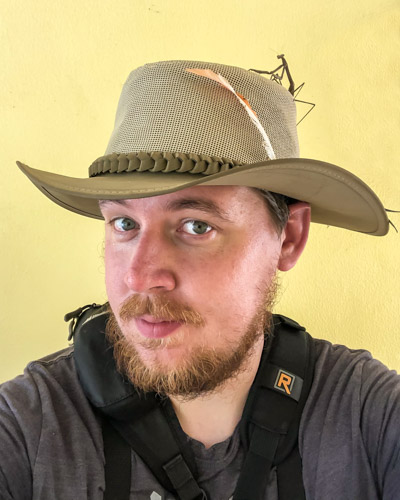After five weeks of waiting my polarizing filter has finally arrived! The filter is 50 mm square making each square millimeter a bargain at a mere $0.76. Why might you ask is this tiny piece of glass so expensive? This polarizing filter is capable of filtering light from 200 nm to 4000 nm with a relatively flat transmission spectra across this wide swath of the electromagnetic spectrum spanning ultraviolet, visible and infrared light. Creating a filter that works across such a range of wavelengths requires specialized manufacturing techniques and has only a handful of applications. Unfortunately for me insects see well into the ultraviolet making the common and inexpensive visual light polarizers unsuitable for my research.
A interesting trick you can do with any polarizing filter, like a pair of sunglasses, is to rotate it in front of a LCD screen. These displays put out light that is polarized primarily in the vertical direction (0°). All polarizing filters have an angle of polarization where they transmit the most light. When the polarization angle of the filter is vertical (0°), it is aligned with the polarization angle of light from the display and very little light is filtered out. As the filter is rotated the filter darkens as the polarization angle of the filter comes out of alignment with the light from display. The filter is darkest when the angle of the filter is perpendicular (90°) to the angle of the light. The better the polarizer the more light it transmits when the filter is aligned with the light and the more light it will block when the filter is perpendicular to the light. I am really impressed with how much more black the filter looks at 90° compared with my polarized sunglasses. This filter really is a quality piece of optical engineering. I just hope my insects like it as much as I do.





Follow Me